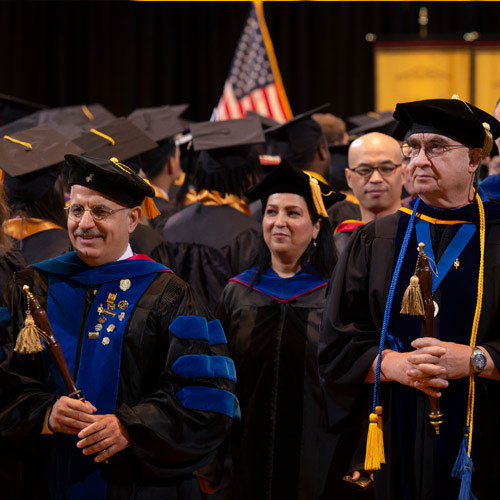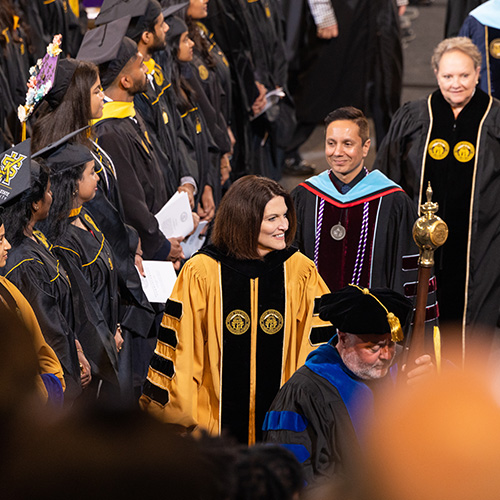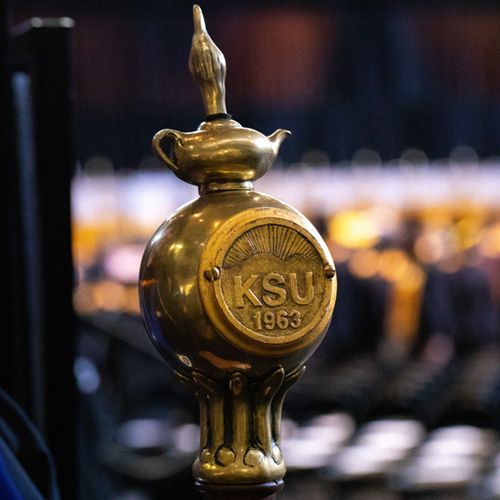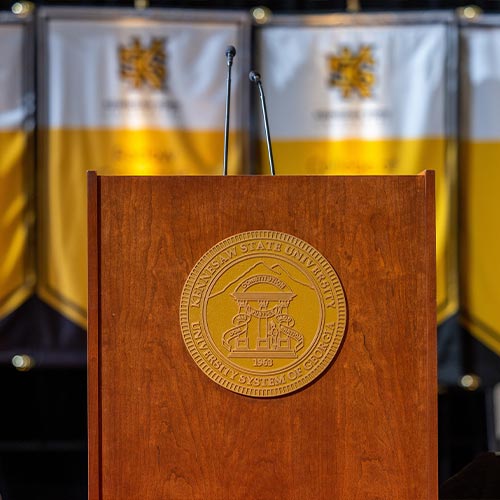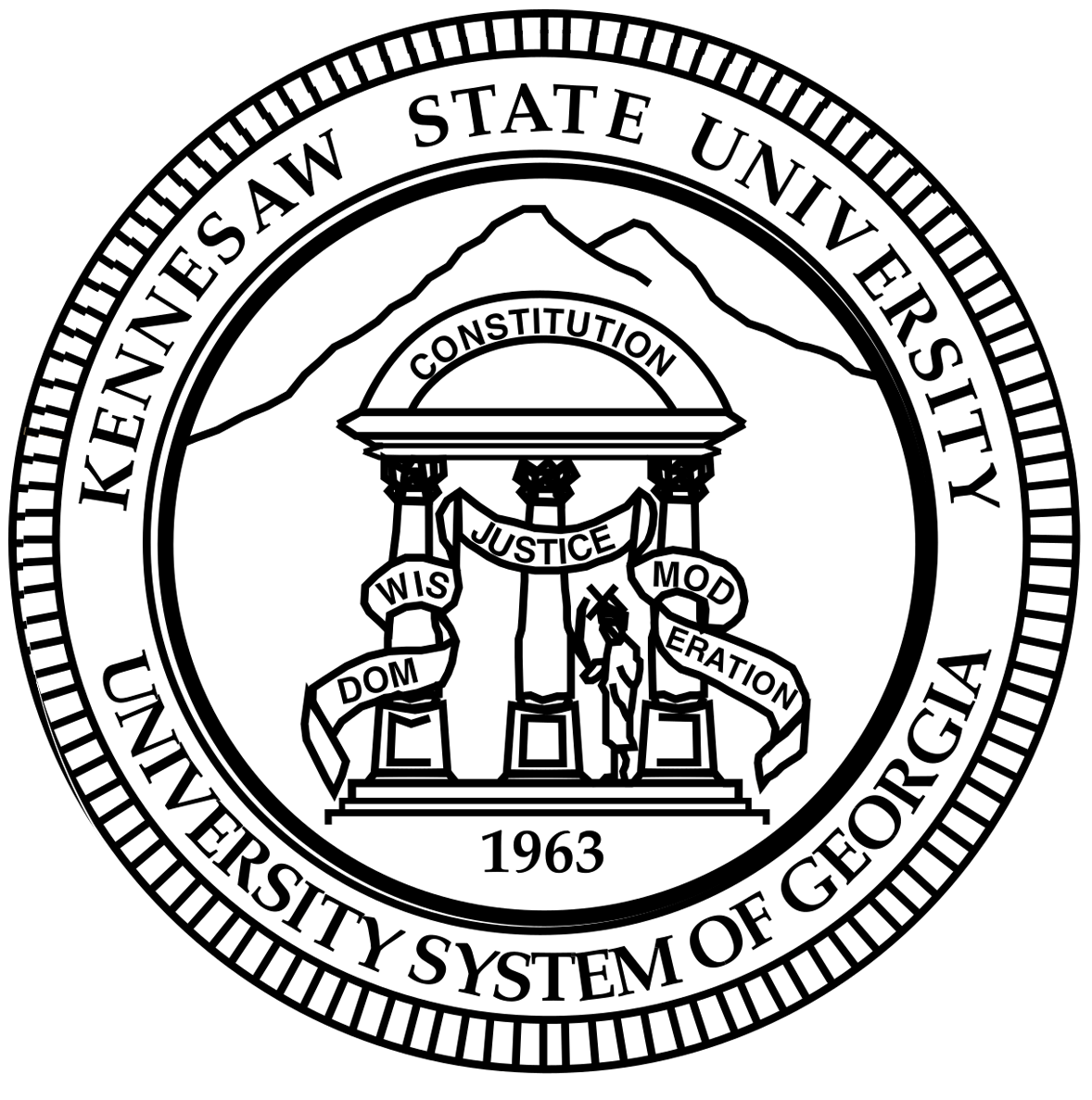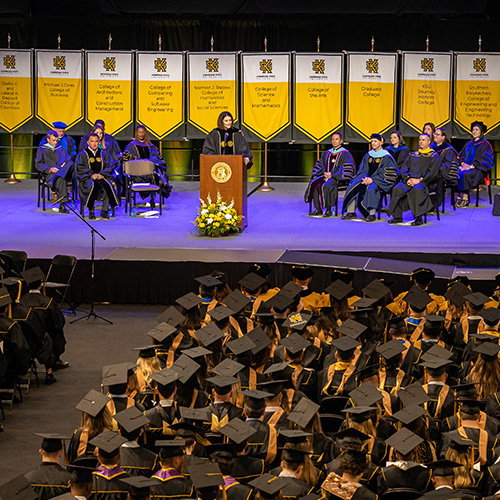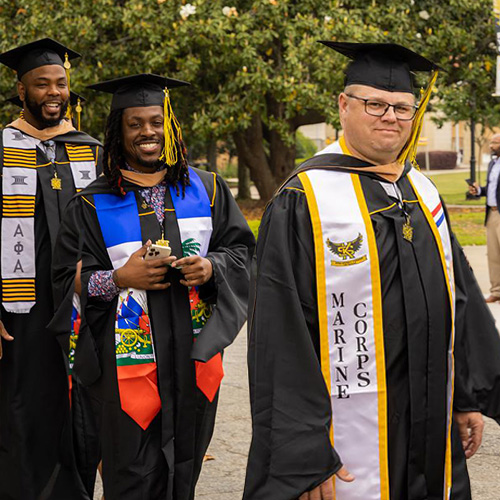Marshals and Batons
Faculty members from each college are chosen to assist with the ceremony by serving as student or faculty marshals. These marshals carry KSU batons — created for the inauguration of President Daniel S. Papp — as they lead the processional lines. Like the mace, the baton was originally a war club – though miniature in stature. The four batons, created by biology professor Bowman Davis, are hand-turned staff made out of walnut, featuring a hand-carved, stylized owl, complete with an ebony finish to reflect the styling of the mace. Gold and black tassels complete the batons.
